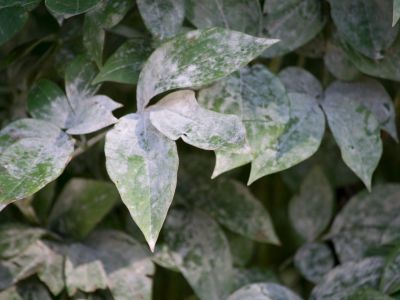Powdery Mildew on Peonies
So what does a peony with powdery mildew look like? You can easily recognize this condition by the white, powdery growth that forms on the plant’s leaves. Occasionally, powdery mildew can be seen on the flowers as well. Any new growth may also appear powdery, exhibiting a stunted or distorted appearance too. In addition to the powdery growth, infected leaves may drop from the plant and flowers become distorted and unattractive.
Causes of White Powder on Peonies
Powdery mildew is caused by a fungus. There are actually many types of powdery mildew, all having varying growth requirements. However, most species of powdery mildew can germinate with or without water—though humid conditions are quite common for growth. Other ideal conditions for powdery mildew are moderate temperatures and shade, which generally spawn moisture. Lots of heat and sunlight, on the other hand, can hinder its development. Therefore, these conditions are more suitable for preventing powdery mildew on peonies.
Treating Peony Powdery Mildew
Once powdery mildew appears, it can be difficult to treat, depending on the type and how severe the problem. For this reason, prevention is important. Avoiding susceptible cultivars, locating plants in full sun, providing suitable air circulation, and practicing proper maintenance (i.e. water, fertilizer, etc.) is usually adequate. Watering in the morning hours may also help. Even with the best of precautions taken, powdery mildew may still strike. Although fungicides can help when applied early on, heavier infections may need to be treated with horticultural oil or neem oil. You can also use a homemade solution—mixing together a tablespoon (15 ml.) each of baking soda, horticultural oil (or canola), and liquid dish soap (without bleach) with a gallon (4 L.) of water. Spray on your peonies every 10 to 14 days throughout the summer months. Do not spray the solution during hot and sunny days and always test on a small part of the plant before using it on the whole plant.
